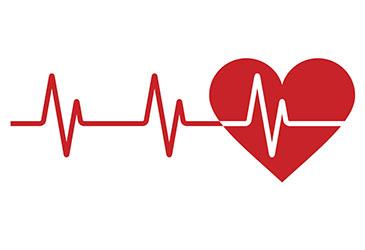The results of the SPRINT trial are in, and you’ve probably heard that making 120 mm Hg the new blood pressure target helped lower mortality rates. Yet the study outcomes apply only to a specific subset of patients with hypertension. See whether or not your patients may fit into this category.
In the much-anticipated results of the SPRINT trial, the relative risk of death from cardiovascular causes was 43 percent lower for patients receiving more intensive treatment for a 120 mm Hg target versus those who received standard treatment for a 140 mm Hg target.
While these results were unexpected and are noteworthy, what you won’t see in much of the news that summarizes this study is that these benefits only apply for patients who meet the same criteria used for study participants. In fact, five out of six patients currently being treated for hypertension do not meet the criteria of the study—and therefore wouldn’t benefit from its results.
In order to participate in the trial, patients needed to meet these eligibility criteria:
- Are at least 50 years old (the average age was nearly 69)
- Have systolic blood pressure of 130-180 mm Hg
- Have high risk of a cardiovascular event (one or more of the following):
- Cardiovascular disease other than stroke
- Chronic kidney disease
- A Framingham Risk Score for 10-year cardiovascular disease risk above 15 percent (but the study mean was 20 percent)
- Be 75 years or older
- Have not had a stroke
- Not have diabetes
What should you do with these results?
The simple answer: Don’t do anything yet. Associated with a lower target blood pressure were increased adverse events, including kidney failure, low blood pressure and loss of consciousness. Patients who do not meet the eligibility criteria may be exposed to the harms and possibly not the benefits and should continue their course of treatment.
Luckily, the SPRINT results have been released in time for the American Heart Association (AHA) and American College of Cardiology writing group to consider them for the much-anticipated guideline on the management of hypertension, which will be released sometime next year.
More cardiovascular news and resources
Coinciding with the AHA Scientific Sessions earlier this week, JAMA released a special theme issue on cardiovascular disease. Among various topics, the issue digs into the potential implications of recently approved PCSK-9 inhibitors, screening for atrial fibrillation, treating exercise as a “dose” of medicine and an investigation into the common problem of the assessing patients with chest pain.
Also at the Scientific Sessions, the AMA and AHA announced Target: BP, a joint initiative to help improve outcomes around heart disease. The initiative is designed to address the growing burden of high blood pressure and help physicians and patients improve health outcomes by achieving better blood pressure control.
Additional resources that can help you ensure your patients receive the treatment they need to get their blood pressure under control include:
- The one video you need for accurate blood pressure readings
- M.A.P. to improve blood pressure control
- 3 steps to help patients improve blood pressure control




